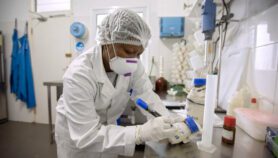Send to a friend
The details you provide on this page will not be used to send unsolicited email, and will not be sold to a 3rd party. See privacy policy.
Scientists have discovered how extracts of the Chinese herb quingao (also known as sweet wormwood) — used for centuries as an anti-malarial remedy — work to combat malaria.
The extracts’ active ingredients, known as artemisinins, were identified in the 1970s. Since then they have become increasingly important for treating malaria as resistance to existing drugs spreads; indeed, in some parts of South East Asia they are the only effective anti-malarial. But the precise mechanism by which artemisinins kill the malaria parasite has until now remained obscure.
In this week’s Nature, Sanjeev Krishna from St George’s Hospital Medical School in London, United Kingdom, and colleagues report that artemesinins work by blocking the action of an enzyme called PfATP6, which is crucial to the survival of the parasite.
The finding could eventually lead to the manufacture of synthetic artemisinins that can target this enzyme more precisely. And in the short-term, studying the genetics of PfATP6 in populations of parasites could help to pre-empt resistance that has rendered other drugs useless, the researchers say.
The research “has a practical significance beyond its undoubted scientific merit,” comments Robert Ridley of the World Health Organization in an accompanying article in Nature.
Link to article by Robert Ridley in Nature
Link to research paper in Nature
Reference: Nature 424, 887 (2003) / Nature 424, 957 (2003)













